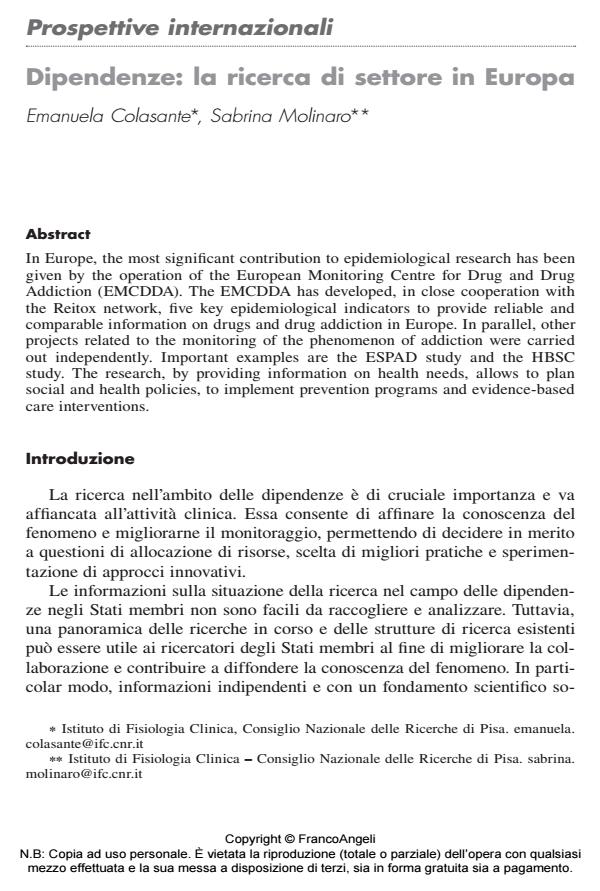Dipendenze: la ricerca di settore in Europa
Titolo Rivista SICUREZZA E SCIENZE SOCIALI
Autori/Curatori Emanuela Colasante, Sabrina Molinaro
Anno di pubblicazione 2014 Fascicolo 2014/3
Lingua Italiano Numero pagine 15 P. 167-181 Dimensione file 120 KB
DOI 10.3280/SISS2014-003013
Il DOI è il codice a barre della proprietà intellettuale: per saperne di più
clicca qui
Qui sotto puoi vedere in anteprima la prima pagina di questo articolo.
Se questo articolo ti interessa, lo puoi acquistare (e scaricare in formato pdf) seguendo le facili indicazioni per acquistare il download credit. Acquista Download Credits per scaricare questo Articolo in formato PDF

FrancoAngeli è membro della Publishers International Linking Association, Inc (PILA)associazione indipendente e non profit per facilitare (attraverso i servizi tecnologici implementati da CrossRef.org) l’accesso degli studiosi ai contenuti digitali nelle pubblicazioni professionali e scientifiche
In Europe, the most significant contribution to epidemiological research has been given by the operation of the European Monitoring Centre for Drug and Drug Addiction (EMCDDA). The EMCDDA has developed, in close cooperation with the Reitox network, five key epidemiological indicators to provide reliable and comparable information on drugs and drug addiction in Europe. In parallel, other projects related to the monitoring of the phenomenon of addiction were carried out independently. Important examples are the ESPAD study and the HBSC study. The research, by providing information on health needs, allows to plan social and health policies, to implement prevention programs and evidence-based care interventions.
Emanuela Colasante, Sabrina Molinaro, Dipendenze: la ricerca di settore in Europa in "SICUREZZA E SCIENZE SOCIALI" 3/2014, pp 167-181, DOI: 10.3280/SISS2014-003013